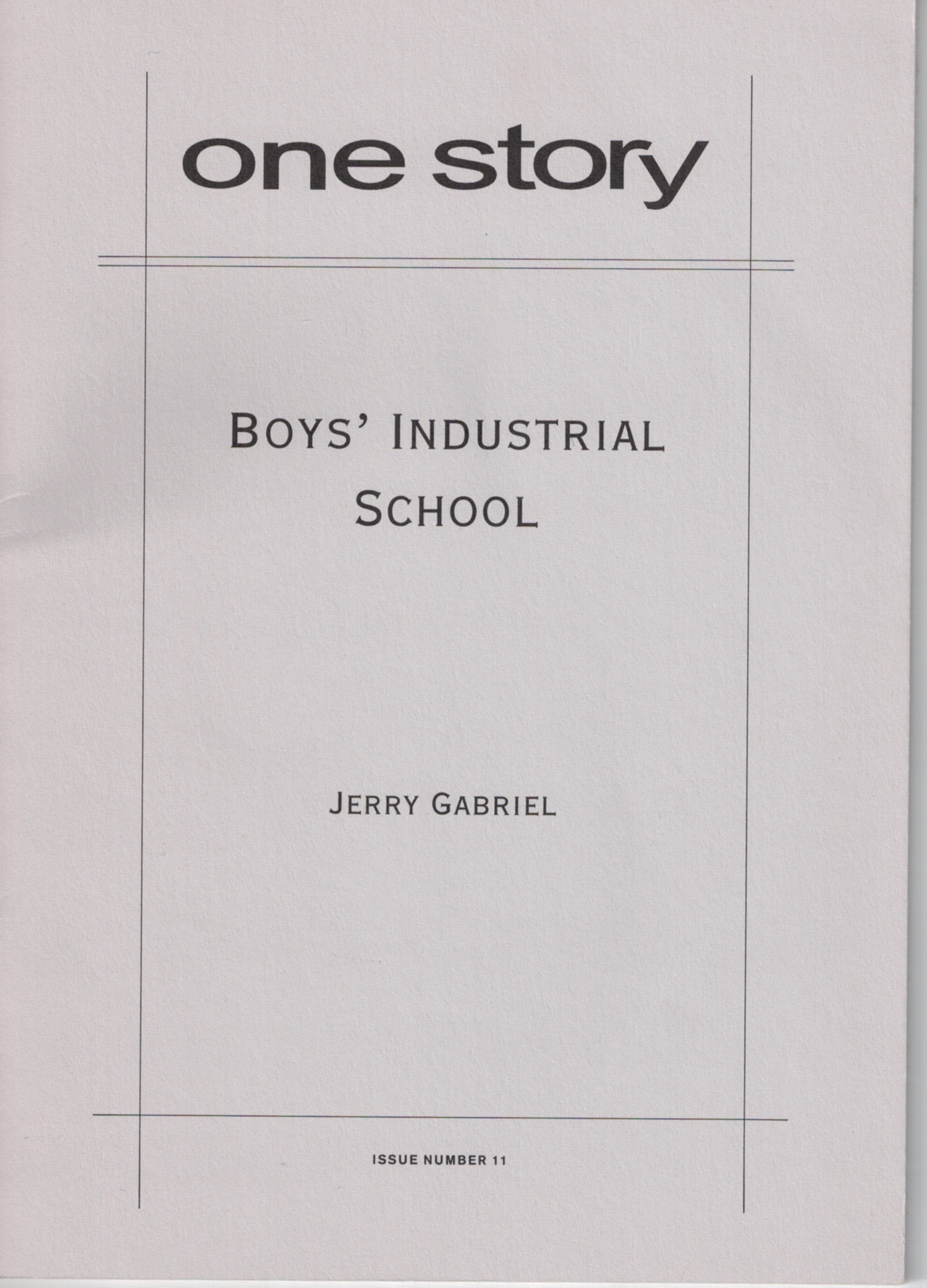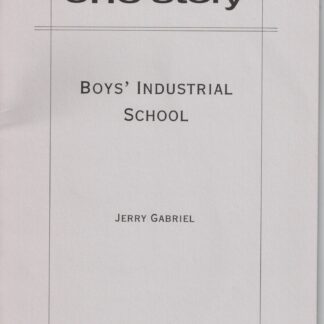
Boys Industrial School
$2.50
36 in stock
Excerpt
The deputy seemed to be measuring the boys up. He looked about the place from his cruiser, his window down. Beyond Nate and Donnie Holland there was just the desolate November woods and the endless hills and Milford Run meandering next to the road among its thickets. It was chilly and the children wore heavy coats; their breath billowed in the air in front of them.
“Boy run off Thursday from the Industrial School,” the deputy told them. “Neither a you seen a blond-headed kid, ‘bout your age?” He was looking at Donnie. Donnie was twelve.
Jerry Gabriel
Jerry Gabriel lives in Ithaca, New York, where he teaches communications in Cornell University’s College of Engineering. His fiction has appeared in Epoch and Fiction among other places. He is at work on a novel.
Q&A by Hannah Tinti
- HT: Where did the idea for this story come from?
- JG: This story is an overhaul of one I wrote nearly ten years ago called “Tape Indians”. Both the earlier version and the later began in my mind with memories I had of following my older brother into the woods when we were very young. In particular, “Boys’ Industrial School” started with an image (since edited from the story) of the two boys underneath an old hay wagon in one of the thin creekside strips of field that people bale out of apparent desperation for any real land. It is snowing in this memory—flurries, really. But I made it snow in the story, because I like ominous weather. The Boys Industrial School (everyone knew it as BIS) itself came in as I was mining my experiences of living along that road; BIS was a real place, about 13 miles away, and I do recall being stopped by deputy sheriffs on the matter of escaped juveniles (though this probably happened far less in actuality than in my memories of it). Interestingly, I’ve since learned that BIS was heavily subsidized by Bob Hope, who was apparently “enrolled” there for a time. A friend’s father tells of attending swim meets there in the fifties, where they had one of the few indoor pools in southern Ohio.
- HT: Have you done any research on reform schools?
- JG: I know next to nothing about reform schools, but I know at least a little about the juvenile delinquent’s mind. I worked as a counselor for a year in a program in Flagstaff, Arizona that works with young, non-violent offenders. We would usually have five or ten boys living in the house—all of them coming directly from jail, typically for drug charges of one stripe or another. We were with them 24 hours a day (because when we left them unattended we generally found them doing something like huffing gas from the lawnmower). It was a great job, though, and we would work trails with them, and on the weekends, we would take them hiking in the mountains, which they had mixed feelings about, and occasionally we would do things like go river rafting, which they (and we) liked a great deal.
- HT: Would you classify this as a ‘coming of age’ story?
- JG: Absolutely. For me, it is about this awful moment for Nate, where he sees the world taking shape and begins to understand the complexity of it. He sees in his inscrutable brother the mystery that is human motivation.
- HT: How long did it take you to complete this story?
- JG: I wrote the first draft of “Boys’ Industrial School” unbelievably fast for me. I think it was maybe three days, total. Like I say, I was working from an earlier story, but other than a few lines, I don’t think I used “Tape Indians” in any way other than its emotion. The revision process was more complicated, of course. One of the difficulties in revision was that this character, Nate, is the point of view character in about five other stories in the collection I was working on at the time (and am still finishing up; see below). Various members of Nate’s family actually appear in other stories, so I felt sort of bound by that. It proved to be something I had to let go of, though; this story refused that neat package. Which didn’t break my heart in the end; I think it works out okay.
- HT: What is the best bit of advice about writing you have ever received?
- JG: I generally have to fall down myself before I learn something, which is a slow, messy process. So advice does me less good than it ideally might. Not that I haven’t learned from things people have said. I don’t know that it quite counts as advice, but the writer Stuart Dybek spent a great deal of time in a class I once took talking about the importance of having a broad artistic palette, of forcing yourself (if you must) to take in new things, different kinds of music, poetry, fiction, non-fiction, dance, whatever. Expanding not just your artistic palette, but your understanding of the ways emotion can be expressed. It is, I suppose, a less macho version of the Hemingway ideal of traveling all over the place and “experiencing” things here and there—you know: bullfights and running from bulls and the like. The idea that Dybek wanted to convey was that having a broad range of experiences with art somehow expands your own artistic capabilities. I buy that. I buy it especially because it comes from Dybek. But I do buy it.
- HT: What are you working on now?
- JG: Lately I’ve been working on a novel that may or may not turn out to be called Sesquicentennial, about—and I use that term loosely—the summer a small southern Ohio town turns 150. This is merely the backdrop, of course—and shorthand for saying that I’m still figuring the rest out. The other project that I’ve got going on is the novella-ization of a long story of mine called “Drowned Boy”. This piece has seen so many forms in the past three or four years that it shouldn’t be bothered by the expansion and new genre name. What I’ve done has been to inject a second point-of-view into the story while leaving much of the rest untouched, which I know sounds like a bad idea. We’ll see. My sense is that it’s working, but this perception could just be the mad scientist in my head, running around the lab with green boiling beakers.
